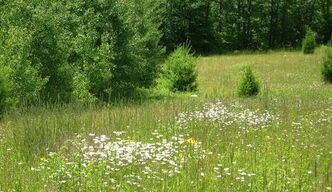Green Burials

What's so great about green burial? To talk about this effectively we've got to look at what's not so great about our current practices. Although there's nothing 'wrong', per se, with modern, western, end-of-life burial practices, there's a lot that's not great about it.
Each year in conventional cemeteries across the US, more than 800,000 gallons of embalming fluid are buried with bodies. These fluids often contain the known carcinogen, formaldehyde. Funeral workers and transporters are exposed to these chemicals and run a higher than normal risk of negative side effects. Nationally we also 'plant' more than 100,000 tons of steel, 2,700 tons of copper and bronze, and over a million and half tons of reinforced concrete with our dead.
Once all these materials go underground in a conventional cemetery (along with 30-plus million board feet of hardwoods, mostly non-local and often 'exotic’ wood), we then position large, upright stones and memorials over the grave, excluding the possibility of multiple uses of the site. We then decrease the site’s biodiversity by planting a mono-culture of grass, and apply unknown quantities (but definitely in the tons) of pesticides, herbicides and fertilizers. Finally, we ceaselessly manicure those grounds with tractors, mowers, and weed whackers.
Find answers to Frequently Asked Questions here.
Each year in conventional cemeteries across the US, more than 800,000 gallons of embalming fluid are buried with bodies. These fluids often contain the known carcinogen, formaldehyde. Funeral workers and transporters are exposed to these chemicals and run a higher than normal risk of negative side effects. Nationally we also 'plant' more than 100,000 tons of steel, 2,700 tons of copper and bronze, and over a million and half tons of reinforced concrete with our dead.
Once all these materials go underground in a conventional cemetery (along with 30-plus million board feet of hardwoods, mostly non-local and often 'exotic’ wood), we then position large, upright stones and memorials over the grave, excluding the possibility of multiple uses of the site. We then decrease the site’s biodiversity by planting a mono-culture of grass, and apply unknown quantities (but definitely in the tons) of pesticides, herbicides and fertilizers. Finally, we ceaselessly manicure those grounds with tractors, mowers, and weed whackers.
Find answers to Frequently Asked Questions here.

